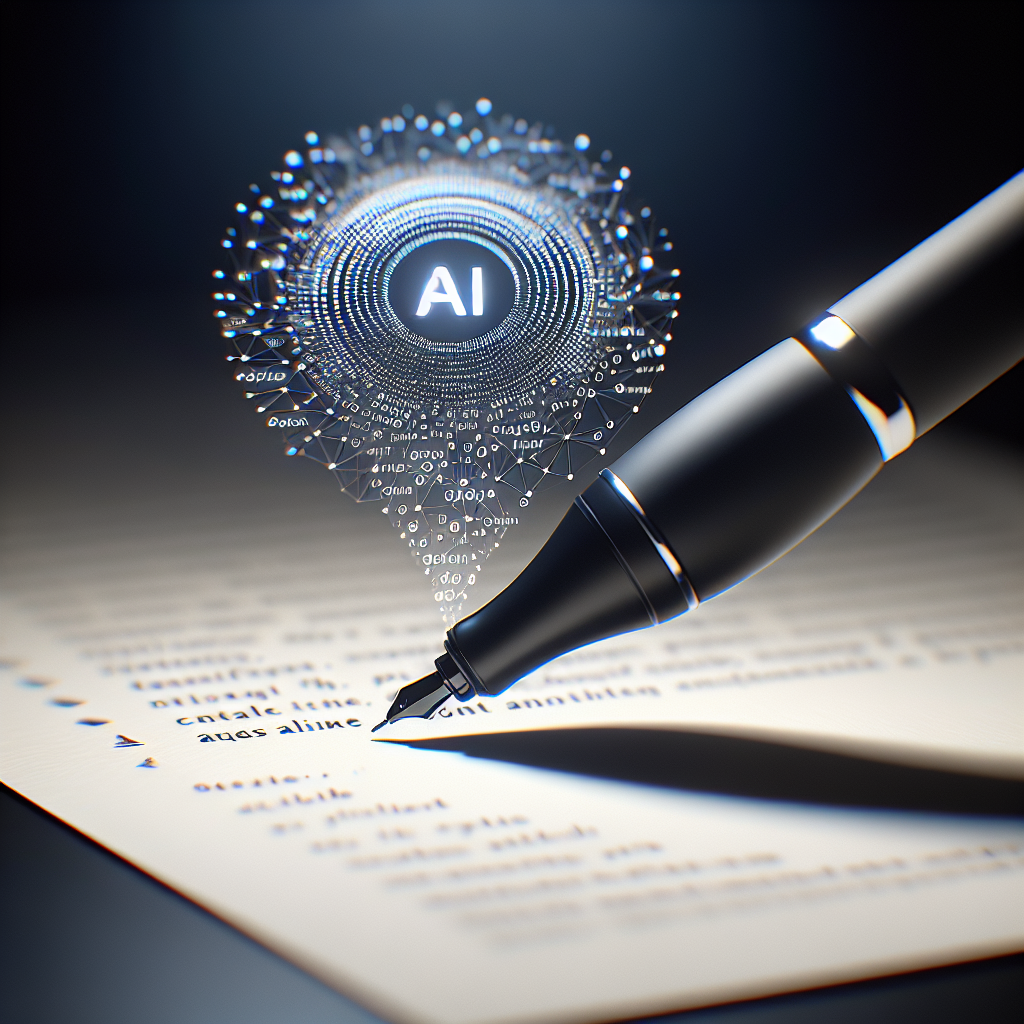Have you ever wondered about the capabilities of AI programs? Well, the world of artificial intelligence has taken a giant leap forward with the introduction of ChatGPT, an innovative program developed by OpenAI. This AI marvel not only has the ability to generate text and analyze data but also raises important questions about the impact of AI on our society. While some see the benefits of AI, others express concerns about issues such as bias, job displacement, and cybersecurity threats. The rise of generative AI models like ChatGPT has also captured the attention of hackers and cybercriminals, who exploit this technology for malicious purposes. As we navigate this new era, it becomes crucial to establish regulations and rules that promote responsible use and address potential dangers. With the debate still ongoing, it is only through careful consideration and understanding that we can harness the true power of AI without compromising our values and security.

Overview of ChatGPT
Introduction to ChatGPT
ChatGPT is an AI program developed by OpenAI that has garnered significant attention due to its ability to generate text and analyze data. As an advanced language model, ChatGPT is designed to understand and respond to human prompts, making it a valuable tool for various applications.
Features of ChatGPT
ChatGPT boasts numerous features that make it stand out among other AI programs. It is adept at engaging in conversation and can provide detailed responses to a wide range of queries. With its ability to understand context, ChatGPT can maintain coherent and meaningful conversations, providing users with valuable information.
How ChatGPT analyzes data
To analyze data, ChatGPT employs a technique known as deep learning. It is trained on vast amounts of text data, allowing it to recognize patterns, understand language nuances, and generate responses that are contextually relevant. This analytical capability enables ChatGPT to provide insightful and comprehensive information to users.
How ChatGPT generates text
The text generation process of ChatGPT involves a combination of techniques including recurrent neural networks and transformer models. These models allow ChatGPT to generate highly coherent and human-like responses. By considering the context of the conversation, ChatGPT is able to produce text that is not only accurate but also natural-sounding and engaging.
Controversies Surrounding ChatGPT
The fear of AI's impact on human civilization
One of the primary concerns surrounding ChatGPT and similar AI programs is the potential impact on human civilization. As AI technology becomes more sophisticated, there are fears that it may outpace human capabilities and lead to job displacement, economic inequality, and even loss of control over critical systems. This fear is driven by the rapid advancement of AI and the uncertainty surrounding its long-term consequences.
ChatGPT's bias issues
Another significant controversy surrounding ChatGPT is its propensity to demonstrate biases in its generated text. Bias can be inherent within the training data used by AI models, leading to biased responses. OpenAI acknowledges this challenge and is actively working to address and mitigate biases in ChatGPT, aiming for fairness and inclusivity in its responses.
Discriminatory content generated by ChatGPT
Related to bias, ChatGPT has generated instances of discriminatory or offensive content. This issue stems from the nature of its training data, which can include biased or offensive content from the internet. OpenAI recognizes the gravity of this concern and is proactively seeking to improve ChatGPT's content moderation to ensure that it does not generate inappropriate or harmful text.
Cybersecurity concerns with ChatGPT
Hackers and cybercriminals are capitalizing on the capabilities of generative AI models like ChatGPT. These malicious actors are leveraging AI-generated text to create highly persuasive phishing emails, social engineering attacks, and even generate malware. This nefarious use poses significant cybersecurity risks, as AI models can mimic human conversations and manipulate unsuspecting users.

Potential Impact of AI
Job displacement and unemployment
One of the most prominent concerns surrounding AI, including ChatGPT, is the potential for job displacement and unemployment. As AI technology continues to advance, it can automate tasks traditionally performed by humans, which could result in a significant workforce upheaval. However, it is worth noting that AI also has the potential to create new job opportunities and enhance productivity in various sectors.
Debates on the overall impact of AI
The overall impact of AI remains a topic of intense debate. Some argue that AI has the potential to revolutionize industries, improve efficiency, and enhance the quality of life. Others express concerns about the potential risks associated with AI, including bias, inequality, and loss of control. Balancing the benefits and risks of AI is crucial to ensure responsible and beneficial deployment.
Risk of AI in terms of terrorism and loss of control
The risk of AI extends beyond economic implications. Leaders and policymakers have identified the potential threat of AI in terms of terrorism and loss of control. The UK Prime Minister has highlighted the need for measures to prevent terrorists from exploiting AI technology. The fear is that AI could be utilized to develop sophisticated, autonomous weapons or enable adversaries to manipulate critical systems with catastrophic consequences.
Concerns about the accuracy and truthfulness of AI programs
Another significant concern surrounding AI programs like ChatGPT revolves around their accuracy and truthfulness. Although AI models can generate seemingly coherent and plausible responses, they may lack the ability to discern factual accuracy. This can lead to the dissemination of misinformation or false claims. Ensuring the reliability and truthfulness of AI-generated content is crucial to maintain public trust.
Addressing the Risks and Challenges
Need for regulations and rules
To properly address the potential risks and challenges associated with AI, regulations and rules are necessary. These regulations should cover various aspects of AI development and deployment, including data privacy, bias mitigation, content moderation, and cybersecurity. Striking a balance between fostering innovation and ensuring responsible use of AI is essential to safeguard against the negative consequences.
Ensuring responsible use of AI
Companies and developers have a responsibility to ensure the responsible use of AI in their products and services. This entails thorough testing and evaluation of AI models to identify and mitigate potential biases and discriminatory content. Additionally, transparency in AI development processes and continuous monitoring for ethical issues can help prevent unintended harmful consequences.
Ethical considerations when developing AI programs
Ethics should be at the core of AI development. Developers must prioritize ethical considerations, such as fairness, inclusivity, and transparency, throughout the entire lifecycle of AI programs. This involves analyzing and addressing biases in training data, implementing robust content moderation mechanisms, and involving diverse perspectives in the development and testing process.
Promoting transparency and accountability in AI
To build trust and address concerns about AI programs like ChatGPT, transparency and accountability are vital. OpenAI has taken steps to increase transparency by sharing aggregated demographic information about ChatGPT users. Additionally, soliciting public input and engaging in open dialogue can help shape AI development practices and ensure that AI systems uphold ethical standards.
In summary, ChatGPT is an incredible AI program that has the potential to revolutionize various industries. However, it is not without controversy and risks. Addressing biases, ensuring responsible use, and promoting transparency and accountability are key steps in harnessing the benefits of AI while mitigating its potential dangers. As AI continues to evolve, it is crucial to strike a balance between innovation and the well-being of society.



